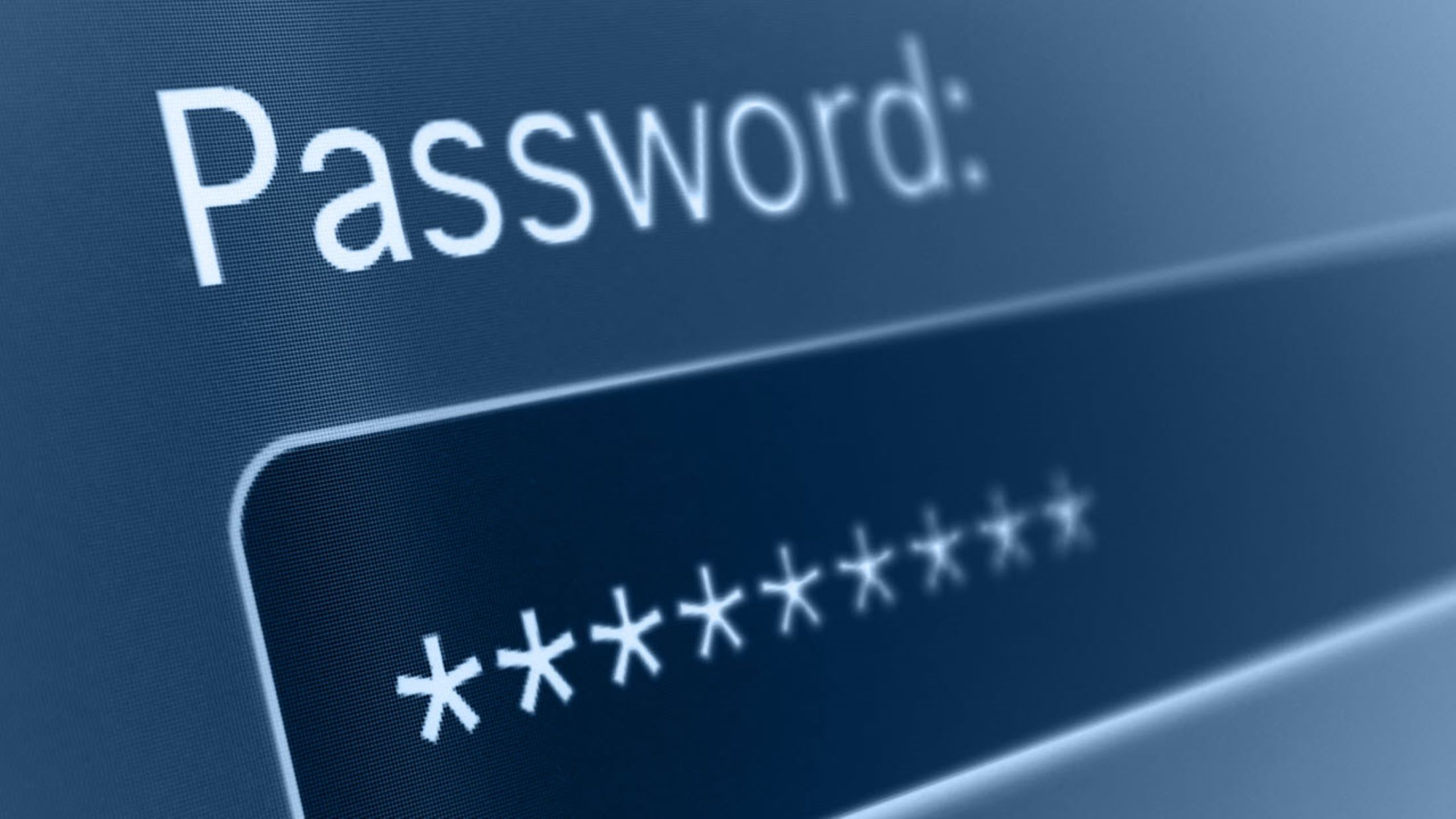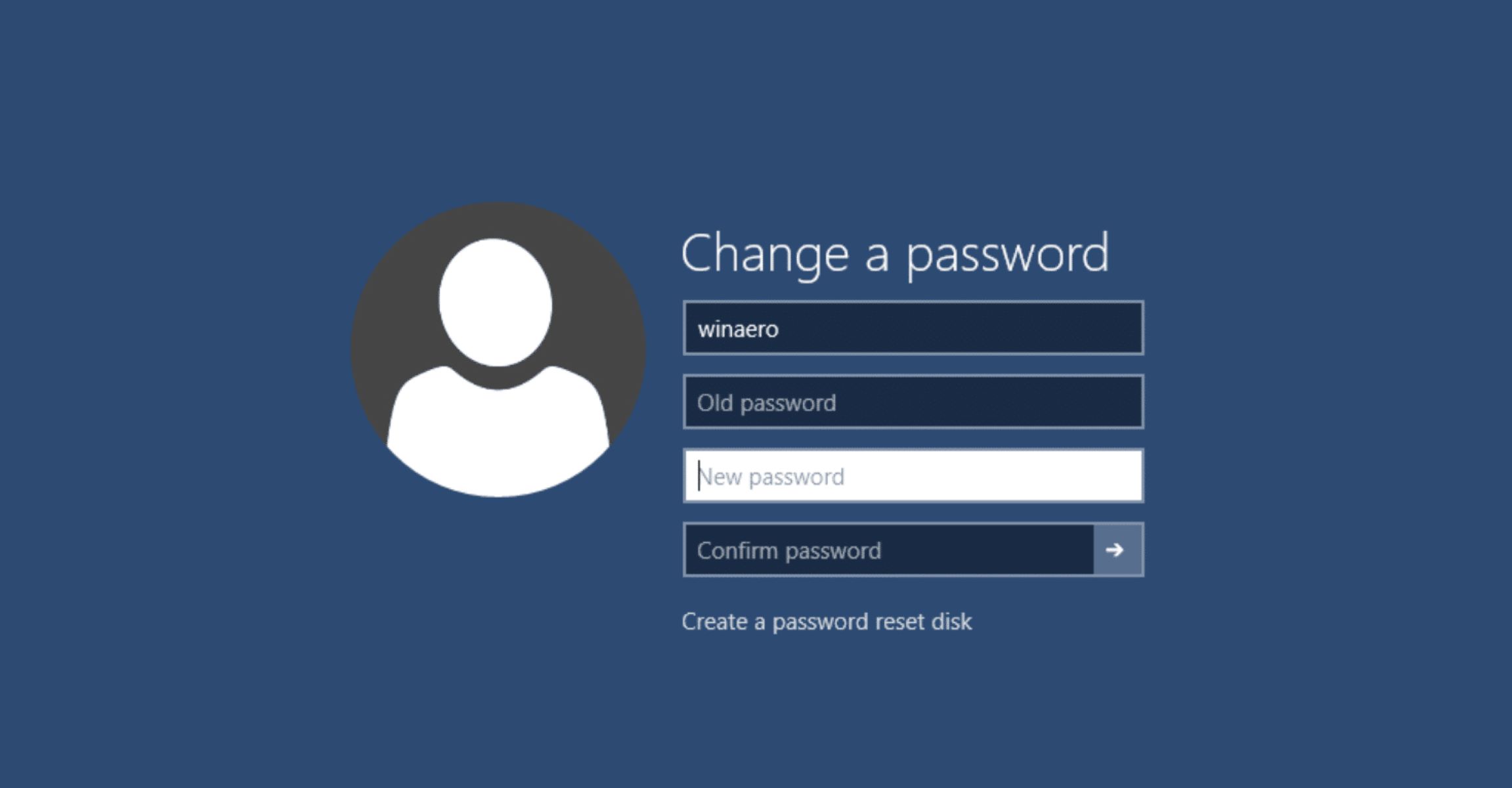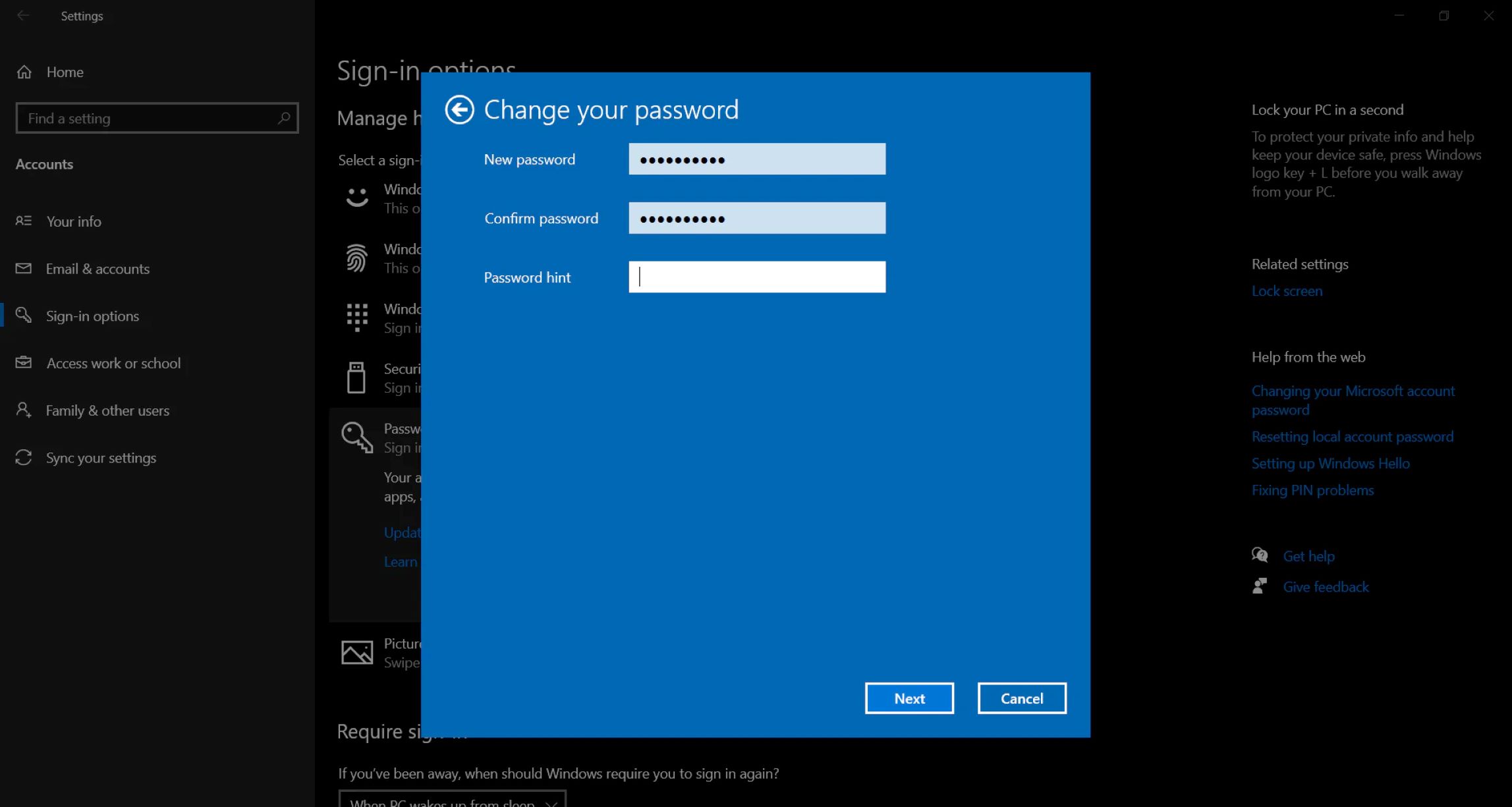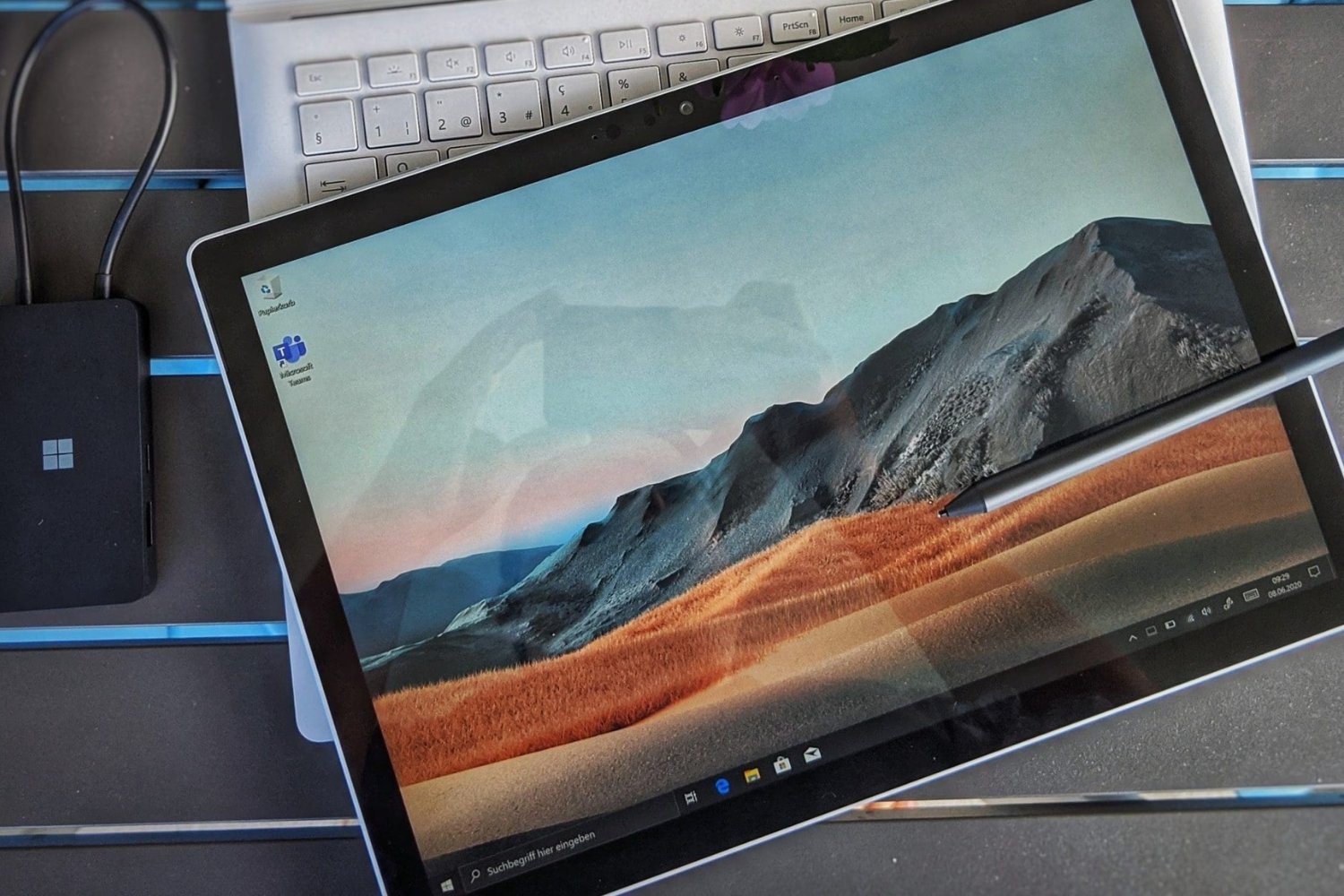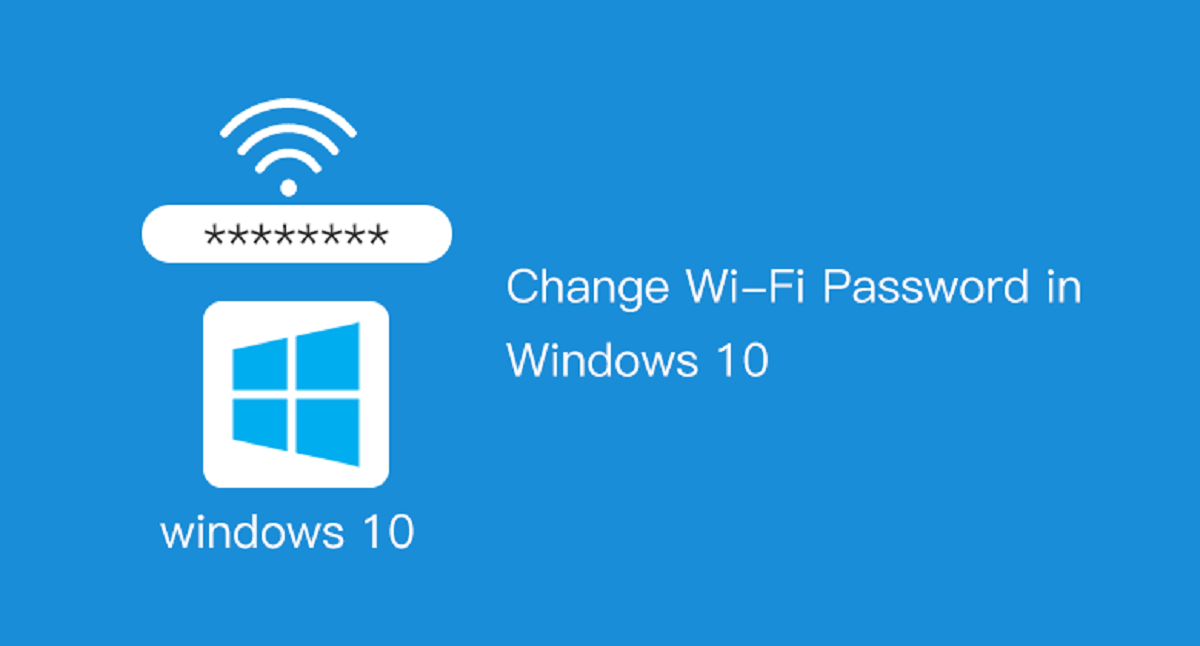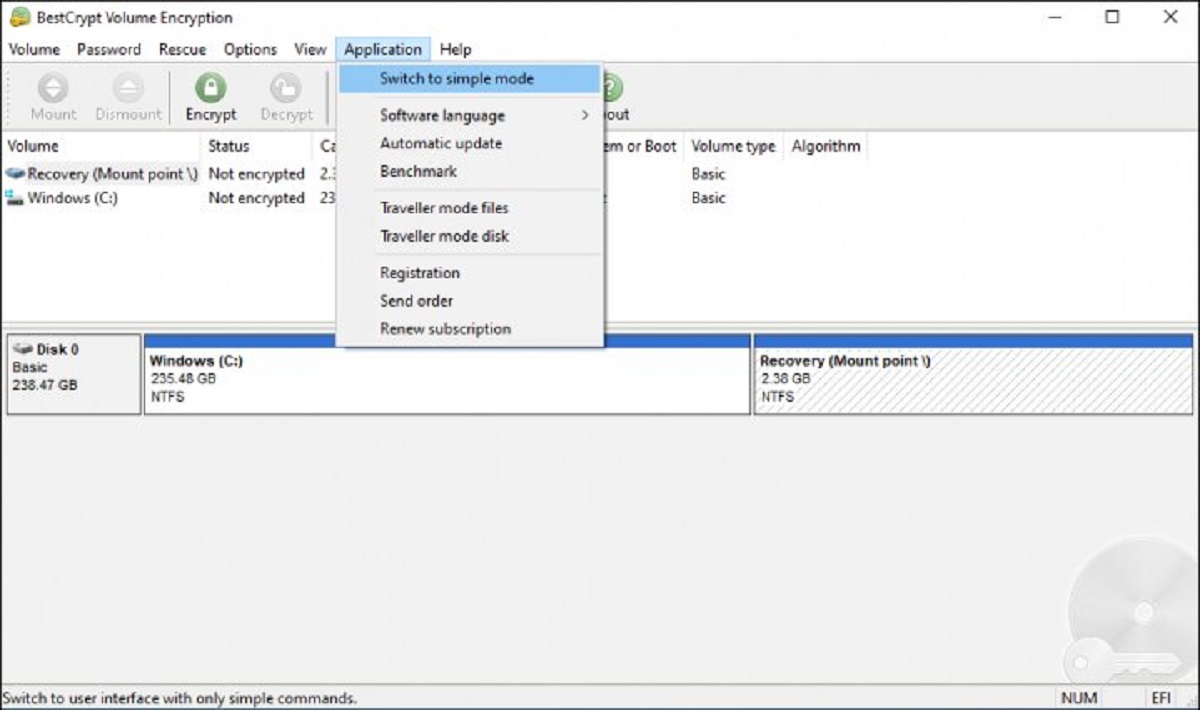Introduction
Windows passwords play a crucial role in maintaining the security and privacy of your computer. They act as a barrier against unauthorized access, preventing anyone from using your computer or accessing your personal data without your permission. Whether you’re using Windows 10, Windows 8, or an earlier version, setting up a strong password is essential for protecting your files, accounts, and online activities.
Setting a password for your Windows account is a common practice to safeguard your computer from intruders, especially if you use it for work-related tasks, store sensitive information, or share a computer with others. While passwords are effective, they can also be a source of frustration if you forget or misplace them.
In this article, we will explore the importance of Windows passwords, discuss situations where you might need to provide your Windows password, and provide solutions for retrieving or resetting your password if you find yourself locked out of your computer.
By understanding why Windows passwords are crucial and learning how to regain access to your account, you will have the knowledge and tools to navigate any password-related challenges that may arise.
Importance of Windows Passwords
Windows passwords are the first line of defense when it comes to protecting your personal information and ensuring the security of your computer. They serve as a barrier between unauthorized users and your sensitive data, preventing them from gaining access to your files, accounts, and online activities. Understanding the importance of Windows passwords is crucial in maintaining a safe and secure computing environment.
One of the primary benefits of setting a strong password for your Windows account is preventing unauthorized access to your computer. Without a password, anyone with physical access to your machine could potentially view your files, install malicious software, or misuse your personal information. By implementing a password, you limit access to only those individuals who know the correct credentials.
Windows passwords are especially important if you use your computer for work-related tasks. They help protect confidential documents, client information, and company data from unauthorized disclosure. By keeping your work computer locked with a strong password, you ensure that only approved individuals can access and utilize the information stored within.
In addition, a Windows password is essential if you share your computer with others. Whether it’s family members, roommates, or colleagues, having individual user accounts with unique passwords ensures that each person’s data is kept private. This prevents accidental or intentional tampering with each other’s files, programs, and settings.
Beyond protecting your personal information, Windows passwords also play a vital role in safeguarding your online accounts. Many people use their computers to access email accounts, social media platforms, online banking, and other sensitive websites. By securing your Windows account with a strong password, you reduce the risk of unauthorized individuals gaining access to these accounts, thereby safeguarding your online identity and preventing identity theft.
It’s important to note that the strength of your password directly affects its effectiveness in protecting your computer. Weak passwords, such as simple combinations or commonly used phrases, are easily guessable and leave your computer vulnerable to unauthorized access. It is recommended to create a strong password by using a combination of uppercase and lowercase letters, numbers, and special characters.
Overall, understanding the importance of Windows passwords is essential for maintaining the security and privacy of your computer. By setting strong passwords and keeping them confidential, you can ensure that your personal information and digital assets remain safe from prying eyes.
When Do You Need Your Windows Password?
Your Windows password is required in various situations to gain access to your computer, protect your privacy, and ensure the security of your data. Understanding the scenarios where you may need your Windows password is crucial for managing your computer effectively.
The most common situation where you need your Windows password is when you log in to your computer. Each time you start your computer or wake it from sleep or hibernation, Windows prompts you to enter your password to unlock your account. This initial login step ensures that only authorized users can access the computer and its contents.
Another common scenario where you may need your Windows password is when installing or uninstalling software. Some software installations and updates require administrative privileges, and Windows may prompt you to enter your password to verify that you have the necessary permissions to make changes to the system.
If you need to change your account settings or manage user profiles on your computer, you will also need your Windows password. Accessing the User Accounts section in the Control Panel or the Accounts settings in Windows 10’s Settings app typically requires authentication with your password. This helps prevent unauthorized changes to user profiles or important system configurations.
When connecting to a wireless network that is secured with a password, you will need your Windows password. Windows will ask you to enter your password when connecting to a new Wi-Fi network for authentication purposes. Without the correct password, you won’t be able to connect to the network and access the internet.
In some cases, your Windows password may be needed to access certain encrypted files or folders on your computer. If you’ve encrypted sensitive files for added security, Windows will prompt you to enter your password when attempting to open or view those files. This ensures that only authorized users can access the encrypted data.
It’s worth noting that there may be additional scenarios where you need your Windows password, depending on the specific security settings and configurations of your computer. For example, if your computer is joined to a domain or managed by an IT administrator, you may need your password for specific administrative tasks or accessing network resources.
In summary, you will typically need your Windows password when logging in to your computer, installing software, managing user profiles, connecting to wireless networks, and accessing encrypted files. Being aware of these situations will help you better manage your computer and maintain its security.
How to Find Your Windows Password
If you have forgotten or misplaced your Windows password, there are several methods you can use to find or retrieve it. The appropriate approach depends on your specific situation and the level of access you currently have to your computer.
Option 1: Remembering Your Password
If you believe you may have simply forgotten your password, try entering any passwords that you commonly use. Check for variations in capitalization or accidental keystrokes. It’s also worth trying any previous passwords you may have used in the past. If you have a habit of using the same password for multiple accounts, try the credentials you use for other online services.
Option 2: Resetting Your Password
If you are unable to remember your password and have physical access to your computer, you can reset your password using the Windows built-in features. On the login screen, click on the “Reset password” or “I forgot my password” option. Follow the on-screen instructions to verify your identity and reset your password. This method typically requires you to answer security questions or provide a secondary email address or phone number.
Option 3: Using Password Recovery Tools
If the above methods do not work or you do not have physical access to your computer, you can use password recovery tools to regain access to your Windows account. These tools can create bootable USB drives or CDs that allow you to bypass or reset your password. Keep in mind that this method may require technical knowledge and can be more complex to execute.
Option 4: Contacting the Administrator
If your computer is part of a network or managed by an IT department, and you cannot reset your password using the methods mentioned above, contact the administrator or IT support for assistance. They may have additional resources or tools to help you regain access to your account.
It’s important to note that while these options can help you retrieve or reset your Windows password, they may not always be successful. In some cases, you may need to seek professional assistance or consider reinstalling your operating system, which would result in data loss.
In any case, it is crucial to maintain a record of your passwords in a secure place to avoid future inconvenience. Consider using a password manager to securely store your passwords and generate strong, unique passwords for each of your accounts.
In summary, if you have forgotten your Windows password, you can try recalling it, reset it using built-in features, employ password recovery tools, or contact the administrator for assistance. Keeping a record of your passwords and using a password manager can help prevent such situations in the future.
Option 1: Remembering Your Password
If you find yourself locked out of your Windows account, one of the first steps you can take is to try remembering your password. It’s common for individuals to forget their passwords, especially if they have multiple accounts or use complex combinations. Here are some steps you can take to attempt to recall your Windows password:
1. Try common passwords: If you tend to use the same password for multiple accounts, try entering your most commonly used passwords. Pay attention to variations in capitalization, accidental keystrokes, or the use of similar words or numbers.
2. Use previous passwords: Sometimes, we change our passwords but continue to use similar patterns or variations of the old ones. Try entering any passwords you have used in the past or passwords that are similar to what you would typically use.
3. Consider hints and security questions: During the password creation process, you may have provided hints or selected security questions to help you remember your password. Take a moment to recollect any hints or think about the answers to your security questions that may jog your memory.
4. Check for password notes or documents: If you keep a physical or electronic record of your passwords, search for any notes or documents that may contain your Windows password. Look through your drawers, folders, or password management applications if you use one.
5. Try other login methods: Depending on your Windows settings, you may have alternative login methods associated with your account, such as a PIN or a picture password. Try these alternative methods if you have set them up previously.
If none of these steps help you remember your password, it’s important not to get discouraged. There are still other methods you can try, such as resetting your password or using password recovery tools.
Note that it’s crucial to develop good password habits, including creating unique and strong passwords and regularly updating them. Keeping track of your passwords, using password managers, and storing your information securely can help minimize the chances of forgetting passwords in the future.
In summary, attempting to remember your Windows password is the first step you can take when locked out of your account. Try common passwords, recall previous passwords, consider hints and security questions, check for password notes or documents, and explore alternative login methods associated with your account.
Option 2: Resetting Your Password
If you forget your Windows password, resetting it is another option you can consider to regain access to your account. This method is useful when you have physical access to your computer but cannot remember the correct password. Here are the steps to reset your Windows password:
1. On the login screen, click on the “Reset password” or “I forgot my password” option: This option is typically available below the password field on the login screen. It may vary depending on the version of Windows you’re using. Clicking on this option will initiate the password reset process.
2. Verify your identity: To proceed with the password reset, Windows will ask you to verify your identity. The verification process may involve answering security questions, providing a secondary email address or phone number, or entering a verification code sent to your alternate contact information.
3. Create a new password: Once your identity is verified, Windows will prompt you to create a new password. Choose a strong and unique password that you haven’t used before. Consider using a combination of uppercase and lowercase letters, numbers, and special characters to enhance the password’s security.
4. Log in with your new password: After successfully resetting your password, you can log in to your account using the new credentials. Ensure that you remember or securely store your new password to avoid future login issues.
It’s important to note that the password reset option may not be available or accessible on some Windows versions or in certain situations. For example, if your computer is connected to a domain or managed by an administrator, you may need to contact the administrator or IT support to reset your password.
Additionally, it’s recommended to use this method responsibly and only on your own devices. Resetting someone else’s password without their consent is a violation of privacy and may be illegal.
Remember, resetting your password can grant you access to your Windows account, but it does not decrypt or recover any encrypted files or data associated with the account. If you’ve encrypted specific files or folders on your computer, you may need additional steps or tools to access them.
In summary, resetting your Windows password is a viable option when you cannot remember your password and have physical access to your computer. Click on the password reset option on the login screen, verify your identity, create a new password, and log in with your new credentials.
Option 3: Using Password Recovery Tools
If you are unable to recall or reset your Windows password through the previous methods, using password recovery tools can be an alternative solution. Password recovery tools are software applications specifically designed to help you regain access to your Windows account. Here’s how you can use these tools:
1. Choose a reputable password recovery tool: There are several password recovery tools available online. Look for reputable options that have positive reviews and a proven track record of success. Consider factors such as compatibility with your Windows version and the specific features offered by the tool.
2. Download and install the password recovery tool: Visit the official website of the chosen password recovery tool and download the software. Follow the installation instructions provided by the tool’s developers to install it on a separate computer or create a bootable USB drive or CD.
3. Boot using the password recovery tool: Insert the bootable USB drive or CD into the locked computer and restart it. Access the boot options menu by pressing the appropriate function key during startup (usually F12 or ESC). Select the bootable device containing the password recovery tool as the primary boot option.
4. Follow the instructions provided by the password recovery tool: Once the computer boots from the password recovery tool, the software interface will guide you through the password recovery process. Depending on the tool you’re using, you may need to select your Windows installation, choose the user account to recover, and follow the on-screen prompts to reset the password.
5. Restart the computer and log in with the new password: After successfully resetting the password using the recovery tool, remove the bootable device and restart the computer. You can now log in to your Windows account with the new password set by the tool.
Please note that using password recovery tools should be done with caution and should only be employed on your own devices or with proper consent. It’s important to check the legality of using such tools in your jurisdiction, as unauthorized password recovery attempts can be considered unethical or illegal.
Keep in mind that password recovery tools may not always work, especially on newer Windows versions or if your account is connected to a domain or managed by an administrator. In such cases, it may be necessary to reach out to the appropriate IT support or professional technician for further assistance.
In summary, password recovery tools can be an option when traditional password recall or reset methods fail. Choose a reputable tool, download and install it, boot using the tool, follow its instructions to reset the password, and restart the computer to log in with the new password.
Option 4: Contacting the Administrator
If you are unable to retrieve or reset your Windows password using the previous methods, contacting the administrator or IT support can be a viable option. This is particularly relevant if your computer is part of a network or managed by a system administrator. Here’s what you can do:
1. Identify the appropriate contact: Determine who the administrator or IT support is for your computer or network. This may be an in-house IT department, a company’s IT service provider, or the person responsible for managing the computer systems in your organization. Identify their contact information or reach out to the appropriate department within your organization.
2. Explain the situation: Contact the administrator or IT support and explain the problem you are facing. Clearly describe that you are unable to access your Windows account due to a forgotten or misplaced password. Provide any relevant details, such as the version of Windows you are using and any error messages you encounter during the login process.
3. Follow the instructions or procedures provided: The administrator or IT support will guide you through the appropriate steps to reset or regain access to your Windows account. They may require you to provide identification or answer security questions to verify your identity before assisting with the password recovery process.
4. Cooperate with the administrator or IT support: Follow any instructions, procedures, or guidelines provided by the administrator or IT support. They may have specific protocols in place for password retrieval or account recovery to ensure the security and integrity of the system.
5. Implement future password management practices: Take this opportunity to learn from the experience and establish better password management practices. Consider using password managers to securely store your passwords, enable multi-factor authentication for added security, and regularly update your passwords to protect against future password-related issues.
Keep in mind that the ability and willingness of the administrator or IT support to unlock or reset your Windows password may vary depending on your organization’s policies and security protocols. They may have additional security measures in place or specific procedures to follow for password recovery. Be patient and cooperative throughout the process to ensure a smooth resolution.
In certain situations, contacting a professional technician or a specialized service provider might be necessary, especially if you are using personal computers or devices without the involvement of an administrator or IT support team.
In summary, reaching out to the administrator or IT support is an option when you are unable to retrieve or reset your Windows password. Identify the appropriate contact, explain the situation, follow their instructions, and cooperate throughout the password recovery process. Implement future password management practices to avoid similar issues in the future.
Conclusion
Windows passwords are vital for protecting the security and privacy of your computer. They serve as a barrier against unauthorized access and ensure that only authorized users can access your files, accounts, and online activities. It is important to understand the importance of Windows passwords and the various scenarios where you may need them.
When it comes to managing your Windows password, there are several options available to you. If you forget your password, you can try recalling it using common passwords, previous passwords, hints, or security questions. Resetting your password is another option that can be done if you have physical access to your computer. Using password recovery tools can also help in retrieving or resetting your password, but be mindful of their legality and usage. Finally, contacting the administrator or IT support can provide you with guidance and assistance when all else fails.
Remember to practice good password habits, including creating strong and unique passwords, regularly updating them, and using password managers to secure and store your passwords safely. By ensuring that you have a strong password and properly managing it, you can enhance the security of your computer and protect your sensitive information.
In conclusion, Windows passwords are a critical component of maintaining computer security. Understanding their importance and knowing how to find, reset, or recover them is essential for maintaining control over your personal information and ensuring the integrity of your computer system.









